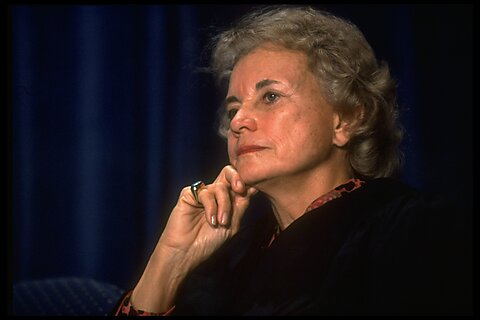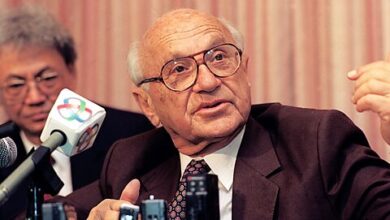Sandra Day O’Connor: A Classical Liberal Appreciation

Justice Sandra Day O’Connor, the first woman to sit on the US Supreme Court, has died at the age of 93. With each year I value her work more on and off the court. Five years ago, when medical reversals caused her to announce her retirement from public life, I wrote:
O’Connor is rightly admired for her inspiring life story and unswerving loyalty to the highest civic principles as well as the ideals of the judiciary. Even at this difficult moment of her life, as the letter shows, she is intent on advancing the res publica.
That O’Connor was the swing Justice of her day did not mean that her role on the Court came down to trimming or compromise. Together with fellow Arizonan Rehnquist, no one was more central in the Court’s reinvigoration of federalism, drawing on her record as the only Justice of our era with extensive service in a state legislature. She has led public discussion in the right direction on issues ranging from professional responsibility and race and redistricting to judicial elections.
And as I noted in 2005, if a single jurist deserves our thanks for helping turn back what had seemed like an irresistible trend toward ever more litigiousness in the civil justice system, it is she. “More vocally than any of her present colleagues, Justice O’Connor sounded the alarm against what she’s termed ‘the increasing, and on many levels frightening, overlegalization of everyday life in our country today.’” Her leading role on such issues as due process review of punitive damages reflected that view. For that, as well as for her notice of my work along the way, count me among the grateful.
There is much more to say from a Cato perspective, starting with her scathing dissent in Kelo v New London (2005) on eminent domain powers, lauded often by Cato scholars. “The specter of condemnation hangs over all property,” she wrote. “Nothing is to prevent the State from replacing any Motel 6 with a Ritz‐Carlton, any home with a shopping mall, or any farm with a factory” under the mistaken Kelo principle — because “in each such case the city would get more tax revenue, and the city council would regard that as a public benefit,” as David Boaz has explained.
In Gonzalez v. Raich (2005) O’Connor led the charge—again, alas, in dissent—against an overbearing federal government power under the Commerce Clause to restrain peaceful local economic activity.
In praising a trio of 2004-06 Supreme Court cases placing limits on presidential war powers, Edward Crane and Robert A. Levy cited in particular O’Connor’s plurality opinion in one of the cases, Hamdi v. Rumsfeld (2004), which they said nicely captured the key principle: “Whatever power the U.S. Constitution envisions for the Executive … in time of conflict, it most assuredly envisions a role for all three branches of government when individual civil liberties are at stake.”
Two elements of O’Connor’s role on the court drew regular criticism. One was her longtime role as the court’s much‐courted swing justice, and therefore more personally powerful than we would like a single justice to be, a role assumed by Anthony Kennedy after her. I wrote about some of the genuine problems with that arrangement, although I would also argue that if the country had to entrust so much power to two individuals with lifetime tenure, we’re lucky it was those two.
The second element of O’Connor’s role that could occasion frustration was her celebrated judicial minimalism, straining not to decide more than was necessary for the case at hand. Again, there are genuine problems with this way of proceeding: the court may obscure its principles and miss a chance to supply a guide to future outcomes. But it’s only fair to note that public estimation of the court’s legitimacy may fare better with the combination of minimalism and a healthy respect for stare decisis, which she had.
And the flip side is that when O’Connor took a wrong step, it tended to be only a step, not a leap into an abysm. Some property rights advocates winced at her opinion for a unanimous court in the 1984 case Hawaii Housing Authority v. Midkiff supporting broad state eminent domain power—but then down the line came her opinion in Kelo.
Her body of work on election law—informed, like so many other areas of her work, by her background as the one justice in the room who’d run for office, managed a state legislative chamber, and served in a state judiciary—deserves its own tribute. On many a topic of this sort, O’Connor’s experience made for a breath of fresh air, as if you’d taken a panel of highbrow food critics and added in someone who’d actually been responsible for managing a kitchen.
Even her choice of what you might call extracurricular activities looks wise in retrospect. A longtime advocate of civility and responsibility in the legal profession, O’Connor took up in retirement the cause of improved civics education more generally. Prescient, I think: if fewer Americans were at sea when asked, say, to name the three branches of government, more of them might be resistant to the lies of demagogues.
All in all, in my opinion, a life for classical liberals to celebrate and admire.





